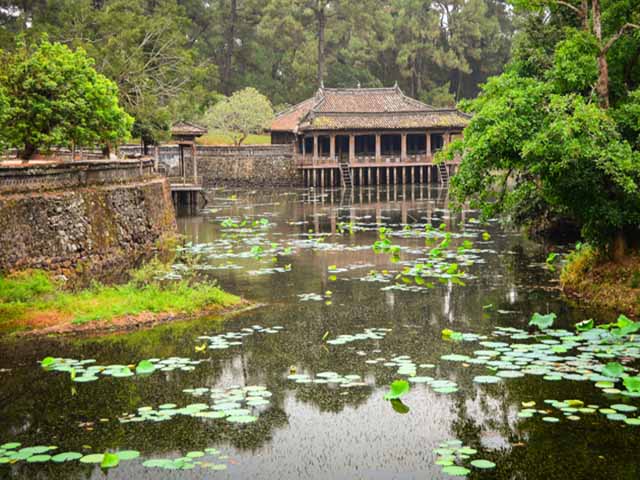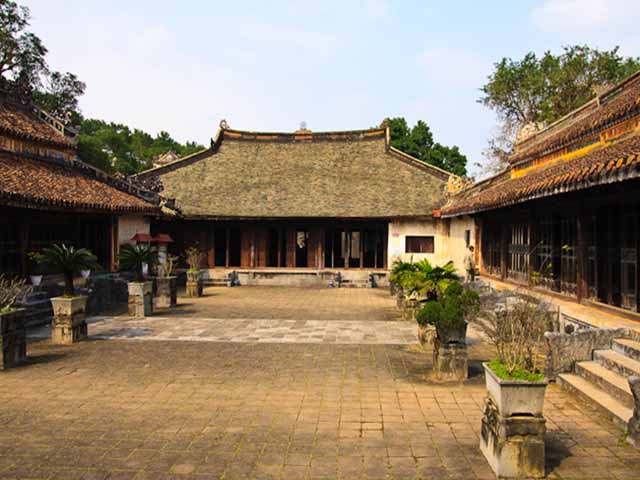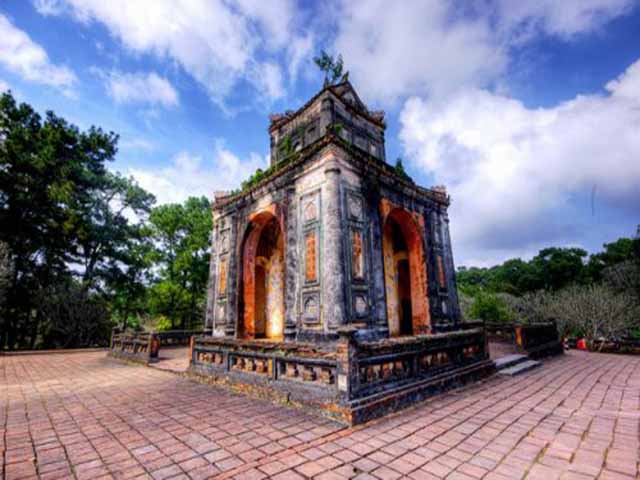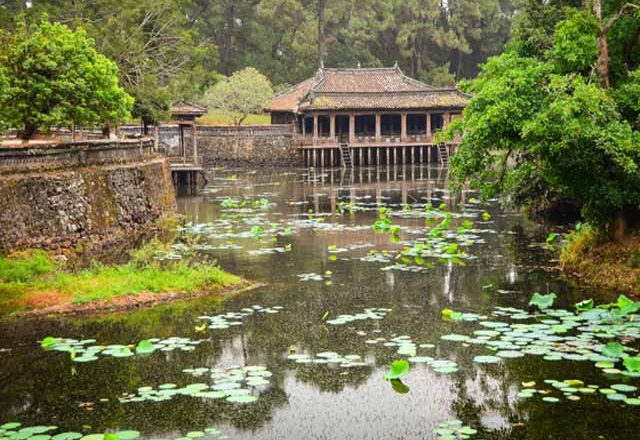Tu Duc Tomb Overview
With unique architecture and perfect harmony with the natural landscape, Tu Duc Tomb becomes one of the buildings that make the charming beauty of Hue. Tu Duc Royal Tomb was built in the Nguyen Dynasty, deserving to be one of the most attractive and indispensable destinations when traveling to Hue City. Let Hue to Hoi An Jeep Tour share more information of Tu Duc Tomb.
History of Tu Duc Tomb
The history of Tu Duc Tomb is associated with many names related to each historical moment. The tomb started its construction in 1864 with fifty thousand soldiers participating in. At this time, the tomb was named Van Nien Co. In order to build the tomb to stay on track in 6 years, hundreds of thousands of people must work from daybreak to midnight. Meanwhile, their lives were extremely difficult: not enough food to eat, not enough clothes to wear, often beaten from rods. The hard labor scene caused indignation in the hearts of the labor people.

After two years of construction, because of unbearable oppression to those who built the tomb, a rebellion of the builders against Tu Duc Emperor happened. The rebels went to the Imperial by three gates: Hien Nhon Hoa Binh, Chuong Duc but the rebellion failed and was immersed in a sea of blood. After this event, Tu Duc Emperor had to rename Van Nien Co into Khiem Cung. In 1873, the tomb was completed and Tu Duc Emperor still lived for more than 10 years in this place before passing away.
Architecture of Tu Duc Tomb
Getting enthronement in the complex country situations and an awful private life when he was unable to have children, Tu Duc Emperor wanted to have a large space to compensate for his sorrow, so he put his heart into his own tomb. The result is Tu Duc Tomb Total Square is about 12 hectares, 10 times larger than Gia Long Tombs.
The layout of the tomb includes nearly 50 large and small buildings scattered in clusters on the land. All the buildings in this overall architecture are accompanied by the word “Khiem” (means “Modest” in English).
Worshipping Area
Bat Trang tiled walkway starts at Vu Khiem Gate and goes in front of Khiem Cung Gate and winds around the tomb. Passing Vu Khiem Gate and Son Than shrine, there is a temple, and the former is the resting place for the emperor.
The first building is Chi Khiem Chamber on the left, which worships the wives of the emperor. After going over 3 stone steps, you will see Khiem Cung Gate, a two-storey building with Luu Khiem Lake at the front.

Luu Khiem Lake is originally a small stream, then it is dug into a lake. It has the meaning of feng shui, a place of “merit creating”, and is also requisitioned to bring lotus to create beautiful scenery. This lake is considered a mini park thanks to Tinh Khiem island located right in the middle. On this island, the emperor planted flowers and raised rare animals. He also raised deer in the garden at Tung Khiem Vien and Dung Khiem Vien. On Luu Khiem Lake, there is also Xung Khiem Pavillion and Du Khiem Boat Landing, where the emperor often went to enjoy elegant pleasures such as enjoying flowers, reading books… Getting across the lake, you will go to the pine hill with so many beautiful scenes.
When going inside Khiem Cung Gate, you can reach the king’s resting place named Hoa Khiem Palace. It is located in a central location where the king took care of the country business, but now it is the place to worship the tablets of the king and queen.
The two sides are Phap Khiem Vu and Le Khiem Vu for servants. As a filial son, the king gave Luong Khiem Temple to worship his spirit mother, Mrs. Tu Du. On the right of Luong Khiem Temple is On Khiem Chamber – a place to store the king’s belongings.
Especially, in the tomb, the king built a royal theater named Minh Khiem Chamber (Minh Khiem Duong) to serve his interests on the opera plays, which is considered one of the oldest theaters of Vietnam.
There is a corridor from On Khiem Palace to Tri Khiem Vien and Y Khiem Vien which is the living place of the king’s concubines.
Tomb Area
The first tomb area is located behind the worshipping area and named Bai Dinh with two rows of statues of officials to serve the king when he goes across the world.
After Bai Dinh is Stele Pavilion (Bi Dinh), which has a 20-ton Thanh Hoa stone stele with the inscription “Khiem Cung Ky” written by the king himself. Khiem Cung Ky has 4,935 words, tells about the life, career, success, failure of the king. Behind the stele are two pillars symbolizing the king’s authority and virtue. Tieu Khiem Lake is shaped like a moon that contains rainwater to wash the soul king before his transcendence!

On the hill across the Tieu Khiem Tri Lake, you can see Buu Thanh built of bricks and in the middle is the mausoleum of Emperor Tu Duc built on 3 floors of stones, but no one knows exactly the king’s body right here.
There is still a special area in this tomb that few people know, it’s Boi Lang, the resting place of King Kien Phuc, the 7th king of the Nguyen Dynasty. It is also located in Khiem Lang. Tu Duc has no child, so Kien Phuc was adopted by the age of 2. Crowned in 1883 but after eight months of reign, the king suddenly died at a young age.
Considered as one of the most beautiful constructions of Nguyen Dynasty in Hue City, Tu Duc Tomb is the best place for you to take photos, reduce the stress and go outside with your friends.
Besides, if you want to know more about the architecture of Oriental places and the history of the last dynasty in Vietnam, this is a must-visit for you.
Best Time to Visit Tu Duc Tomb?
The weather of Hue City has its own characteristics, so not all seasons are ideal for you to explore this ancient land.
The spring period from February to the end of May is considered the ideal time to visit Hue City. At this time, the weather is mild, not too hot and not yet cold, so it’s convenient for visiting and traveling.
Tu Duc Tomb Map
How to Get Tu Duc Tomb?
Tu Duc Tomb is about 6 km southwest from Hue city center, so there are many ways to get to this place. You can rent a bike/motorcycle/taxi / private car, then go to Hue Railway Station, then turn left to Huyen Tran Cong Chua Street, and you can arrive at the tomb. For a taxi, you will pay about $75 for a whole-day tour, while about $ 5 for a bike, or $20 for a motorcycle.

